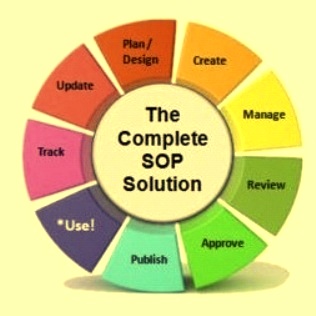GST Implementation gst@amlegals.com
In GST era, the biggest challenge for every organisation will be to not only readying itself for GST implementation but also to have all possible precautions and to undergo an impact analysis of GST implementation .

Before GST Implementation, every company & tax professionals should also realise as to what happened in Malaysia after GST Implementation .
How GST can be implemented in any organisation ?
First Stage – Preliminary discussion and screening
a. GST advisors team to understand about your business transactions for proper GST implementation. | b. There is an interaction on the basis of last discussion about your business with your Indirect tax head and Finance head. | c. GST advisors then focus and analyse your different types of supplies of goods & services, receipt of supplies,receipt of services, implications of CGST, IGST & CGST involved in your business. |
Second Stage – The second most important aspect of GST Implementation is through Documentation on Impact, Implications, Procedural Suggestions & Safeguards
It will be a SOP including advisory, non-litigation & litigation safeguard on the following :
a. Input Tax Credit(ITC) eligibility & transactions,b. Payment of CGST, IGST & CGST,c. Accounting & invoicing Suggestions & safeguards,d. Identification of supplies, time and value of supplies,e. Provisions for supplementary and sundry values,f. Exemptions & export,g. Anticipated supplies, contracts, identificatoin of considerations,h. Misc. provisions and updates for proper implementation,i. Teaming with indirect tax team for quickest revertal on issues,j. Demarcation of DOs & DONTs,k. Industry specific caution for liabilities and safeguards i.e Pharmaceuticals, Chemicals, Engineering, Manufacturing, Electrical, SEZs, EOUs, Multi Locational Manufacturing, Job works etc.,l. Review of suggestions and practical difficulties in implication for a particular industry,m. Suggestions and detailing for changes in SAP or other software in line with GST provisions,n. Hand hold suggestions coupled with exhaustive experience of Court litigation in indirect taxationo.all other measures and planning for GST implementation . |
Third Stage– GST Execution & In house Legal training cum counselling for Proper Implementation
In-house GST legal workshop cum training to make your team work under the guided framework of GST & SOP. | Post Implementation support under various flexible legal advisory, non-litigation and litigation modules. |
Duration – Minimum of 2-3 months are required for complete analysis and working out the GST implementation.This will also vary depending upon a specific sector, nature of business, transactions involved, warehousing, logistics, contractual libailities, transitional issues, hidden aspects etc.
How It Has To Be Done
a. One has to understand the GST implications in a specific industry with reference to Indian conditions .
b. GST advisors are well aware about GST system working in prominent countries i.e Canada, Singapore, UK, Brazil etc. Whereas, the youngest GST system being of Malaysia.
c. The implications of GST is very well known due to an in-depth analysis available on various GST models, evolutions and decisions in litigations in those countries and procedures in practice for last many years.
d. The possible root of litigation related to a specific industry can be understood, foreseen, and anticipated easily in GST regime.
e. Worldwide, the practical difficulties and legal implications in a particular industry is fully known. However, Indian industry differs due to geographical problems, nature of transcations, trade parlance adaptability, imbalance amongst a particular sector, unpspecified transactions etc.
f. Earliest adaptability to the GST framework available in present draft GST in India should be recommended. Since,the framework and structure of GST through out the world is more or less the same.
It is pertinent to note that in GST which is in practice in entire world, the sine qua non of GST i.e concept of supply, consideration, business,recipient, location of supplier, location of recipient,establishment, reverse charge mechanism, continous supply, input tax credit, zero rated supply, composite supply, time of supply, value of supply, market value,etc is almost similar in every country following OECD. Hence, it is neither too early to work on GST implementation nor it is premature to work on GST implementation in any organisation.
The challenge has already begun to effectively implement GST in respective organisations. AMLEGALS always maintains and advises that organisation while teaming up with any GST advisors and/or GST advisory firms,they should thrust not only to make GST transition and implementation become hassle-free but litigation-free as well.
We understand that the framework and fundamental of draft GST is in line with Organisation for Economic Co-operation and Development(OECD) guidelines for which India has shown its commitment way back in 2015 and other GST models of the world are on the same framework as well.
Accolades :
- AMLEGALS is a law firm included in most prestigious LEGAL 500.
- AMLEGALS is an “EXCLUSIVE TAX LAW Recommended Law Firm in India” by Global Law Experts.
- AMLEGALS has been bestowed with International Expert Advisory Award for being “Indirect Tax Firm for India, 2016″





